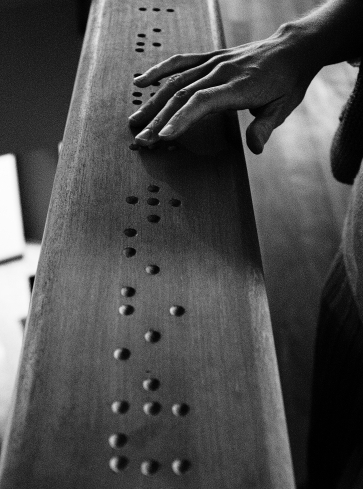The amazing invention of Braille
 While studying to write the Myths of Innovation I read hundreds of accounts of how world changing inventions came to be. While many of those stories are in the book, there are hundreds more worthy of telling.
While studying to write the Myths of Innovation I read hundreds of accounts of how world changing inventions came to be. While many of those stories are in the book, there are hundreds more worthy of telling.Today is the birthday of Louis Braile, one of the inventors for the amazingly clever system of writing for the blind.
For all you designers and engineers out there, language design is extremely hard. Languages have to be efficient, robust, precise, easy to learn and fast to use. Spend a minute considering how hard it is to create a language: can you make a better alphabet? (this was once an interview question at Microsoft).
Braille represents a fascinating combination of engineering, linguistic, and interaction design, all for a high frequency critical task.
The story of the invention of Braile goes back to Napoleon and his desire to find a way for soldiers to communicate at night, silently, without light. A captain in the army named Barbier developed a system called night writing, but it was rejected as being too complex to learn and use. Louis Braille either met Barbier, or learned of his ideas, in 1821. In 1824, after years of work, Braille developed critical simplifications to the design, including moving from 12 dots to 6 per character. At first the system was used to literally translate each character, but as its use spread unique shorthands and contractions were added. Louis Braille was only a teenager when he finished the system, publishing it in 1829 and a revised, further simplified version in 1837.
His own school didn’t adopt the system until 1854, after his death. The system slowly gained adoption in Europe and America (1916).
Prior to this system most blind schools in France used something called a Tactile alphabet, with letter forms were printed raised on the paper. Louis Braille learned this system as a child. These were expensive to print, heavy to hold and clumsy to use.
The invention of the typewriter has some connections to Braille, as Pierre Foucault, a former student at Braille’s school, had an early prototype for a typewriter that printed Braille in 1847.
Technically Braille is the first system of digital writing, since the letters are encoded and can be manufactured and stored or printed mechanically. It is not a universal language however, as the encodings typically translate letters, demanding the reader know the language they are written in (see International Braille, which explains how in 1878 they standardized some elements for Braille across languages).
With the rise of screen reading software the use of Braille is in decline. But it remains a stellar example of design and invention.




